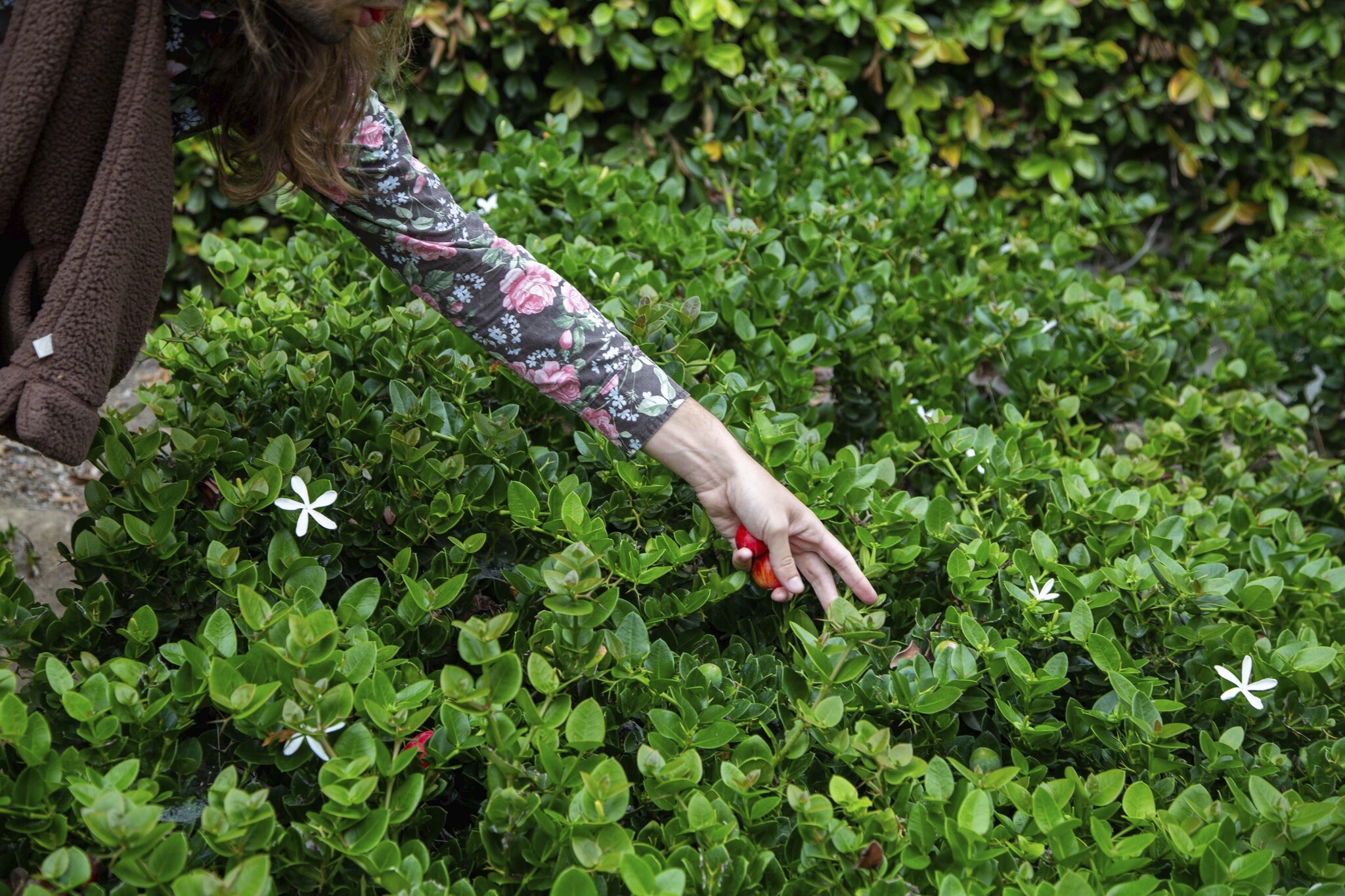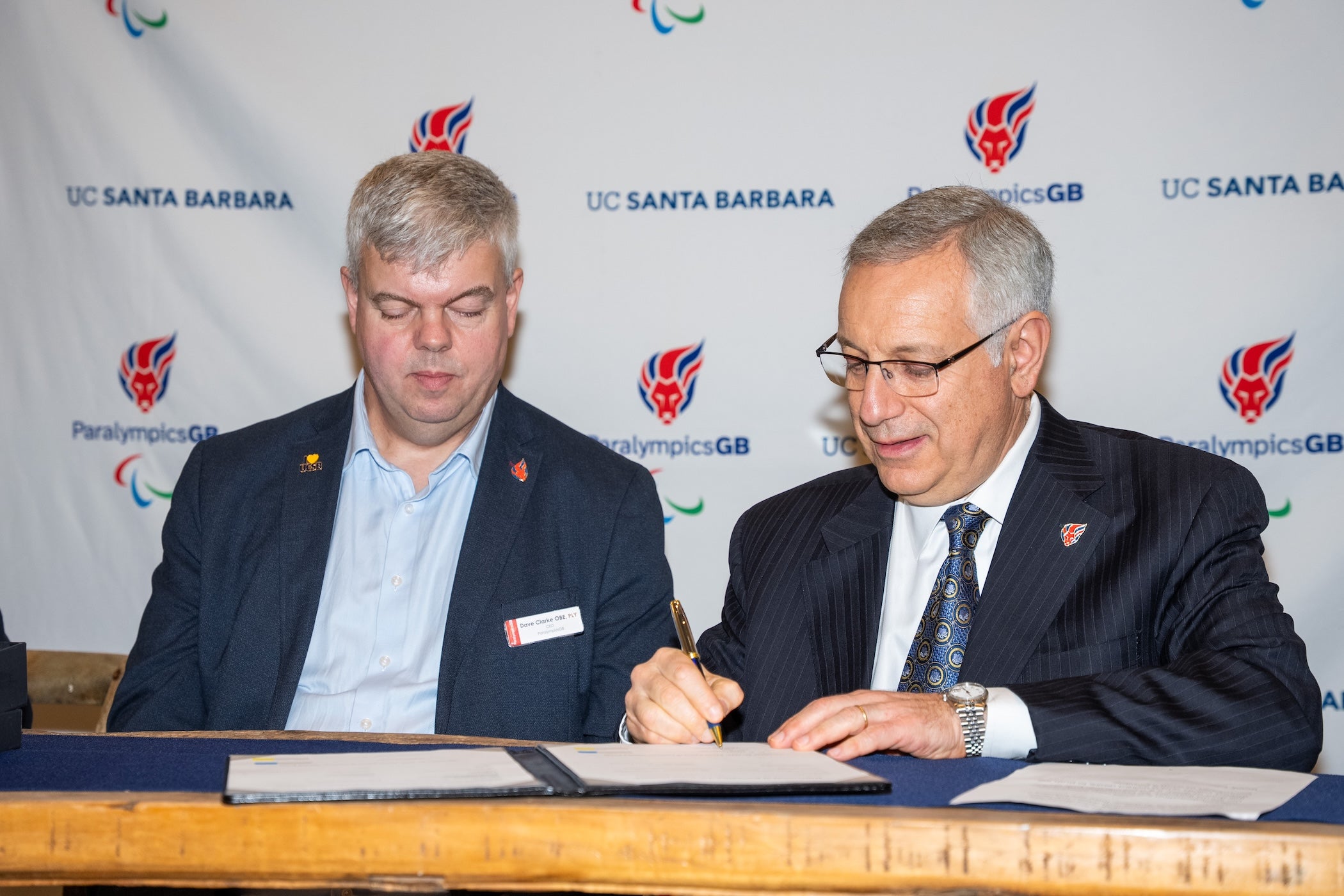So often we think of nature as a distant, unspoilt place where we can leave our worries and commune with the world. As the conservationist John Muir stated, “The clearest way into the Universe is through a forest wilderness.”
But a conversation with UC Santa Barbara Professor Jeffrey Hoelle will convince you there’s no need to journey to distant mountains or untouched woodlands to delight in the environment around us. Nature is just as present in vacant lots and neighborhood parks. And food doesn’t have to come wrapped in cellophane — there are plenty of potential snacks growing all over. Remembering this, he said, provides us with opportunities to engage with the natural world on a daily basis.
“We should make the most of our situation, living here, around Isla Vista and UCSB, and not always romanticize nature as perfect or only located in a faraway place” said Hoelle, an associate professor in the Department of Anthropology. Our landscape invites us to become part of our ecology, whatever that ecology is — “even if it’s a super-urban Southern Californian landscape.”
Hoelle’s research focuses on ethnobotany, the interrelationship between plants and people, including how people view, understand and use the plants around them. But he takes a more hands-on approach to the subject, encouraging students to take notice of the plants on campus and in their neighborhoods that they might otherwise take for granted or overlook.
That’s the conception behind the IV Ethnobotany Project, which encompasses online resources, social media and guided walks led by local experts. “The IV Ethnobotany Project is all about engagement,” said MacKenzie Wade, a doctoral student in the Hoelle Lab. “Really getting students to not just pass these plants on their walk to campus, but to actually engage with them.”

MacKenzie Wade
MacKenzie Wade is a PhD student in sociocultural anthropology with an interdepartmental emphasis in Environment and Society. Her research involves changing cultural perceptions of edible insects, and the impact of the food we eat.
And UC Santa Barbara abounds with useful plants. Some are even edible. Jelly palms near the art and engineering buildings drop tangy yellow and orange fruit from laden boughs. And strawberry guavas around South Hall provide a sweet treat for the observant passer-by.
Wade manages the project’s Instagram account, which posts images and information about edible and medicinal plants around Isla Vista and main campus as well as upcoming events. The website hosts maps and a database of noteworthy plants in the area. The project is supported in part by Hoelle’s 2019 UC Santa Barbara Sustainability Champion award.

“We focus on edible plants that can be harvested in public without causing harm to the plant or the landscape,” Hoelle said. This includes weeds, which can be useful in some situations. “We are trying to find a balance between respect for ecological communities that encourages detached appreciation and cultivating knowledge and use of overlooked and underutilized plants.”
The site provides some basic information and guidelines for safe and ethical foraging around UC Santa Barbara and Isla Vista. Proper foraging involves more than just botanical knowledge; it requires building a relationship with the landscape, its history and the communities that live there. This means knowing also where not to forage. For instance, respecting Chumash heritage sites and sacred plants; not disturbing the campus landscape, which the grounds crew works so hard to make beautiful; and staying away from restoration sites and private property.
“It is fun to go on walks with students and see them discovering the delicious natal plums around the Thunderdome that they have pedaled by for years,” Hoelle said. These experiences encourage people to look at their surroundings with a new perspective. “We want to encourage that, but also to emphasize respectful and safe foraging and a general appreciation for the incredible plants we are fortunate to have here.”

The IV Ethnobotany Project is driven by the interests of the students that run it. For instance, the project overlaps with Wade’s research on edible insects. “It’s all about perceptions of food, the environment and plants,” she said. “So often people walk right past, say, an orange tree or a pineapple guava tree and they don’t necessarily register it as being good food to eat.”
Many of us are conditioned to only consider food from a grocery store, maybe wrapped in plastic, as fit for consumption. Hoelle and Wade recognize that it requires actual engagement with the landscape around us to begin overcoming these preconceptions.
The project invites us to consider any relationship with the plants in our immediate vicinity. “Whether we label a plant as a weed or not determines how we feel about it,” Hoelle said. Weeds are unwelcome, useless, inedible. “There is a lot of power inherent in naming a lifeform as a weed — what you can pull out, what you can poison.”
Hoelle studies the motives behind deforestation in Amazonia. “I work with people cutting the forests down to raise cattle,” he said, “and I’m trying to understand that logic of destruction.” For these people, the diverse flora of the Amazon are seen as obstacles, big weeds preventing them from planting the pasture grasses that are valuable for them to earn a living.
“Seeing that settler-colonial mindset expressed along the frontier of the Amazon — something we all agree should be preserved — it made me question my own ways of relating to the landscape here,” Hoelle continued. It was a perspective he wanted to impart to his students: to foster a connection between them and their environment that wasn’t distant and romanticized; to focus on the local landscape, its history and its current use; and to let his students’ natural curiosity lead the way.
The IV Ethnobotany Project breaks the barrier between scholar and subject. It encourages us to engage with the landscape around us and reevaluate our own preconceptions. “It forces us to consider whether this hands-off approach to interacting with our landscape is something we really need to hold onto,” Hoelle said. “With the project, we are working out how to find a new balance of curiosity and respect, with the larger goal of helping students connect with nature in way that will shape how they see and relate to the world that surrounds them, wherever they go.”
CORRECTION: This article previously misattributed the following quote to John Muir: “Into the forest I go, to lose my mind and find my soul.” According to a November 4, 2018 communication between Harold Wood, Jr. (of the John Muir Global Network) and Mariah Danu, she wrote this in October of 2014 on Tumblr, and it has been wrongly attributed to John Muir ever since.
(805) 893-7220




